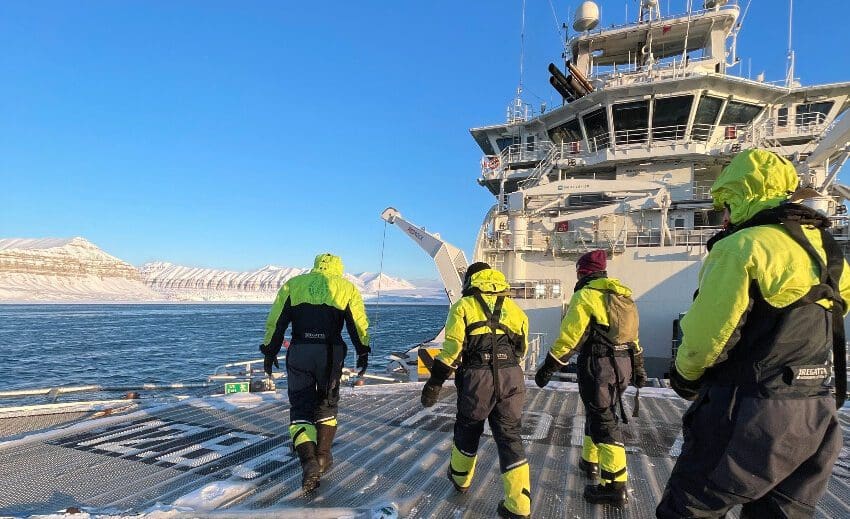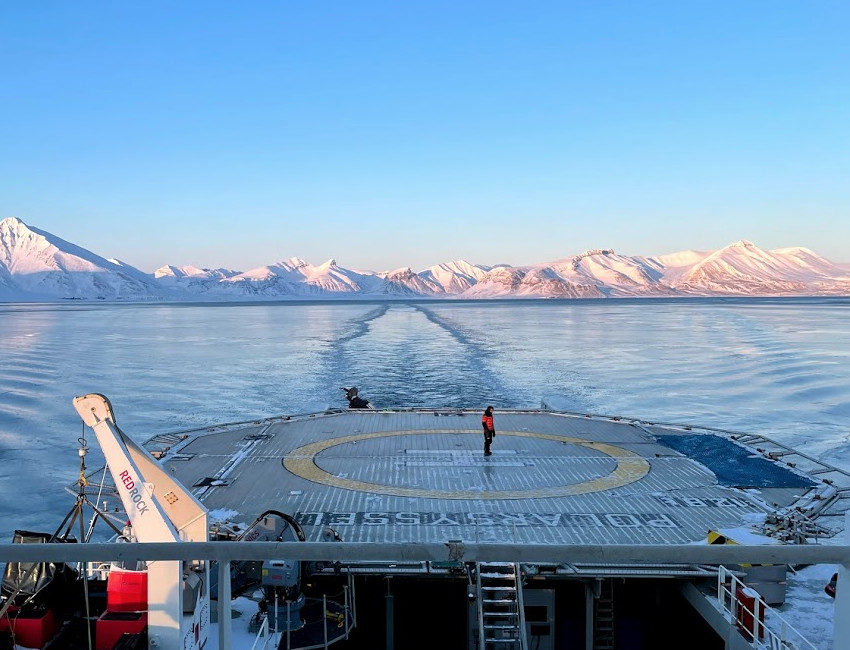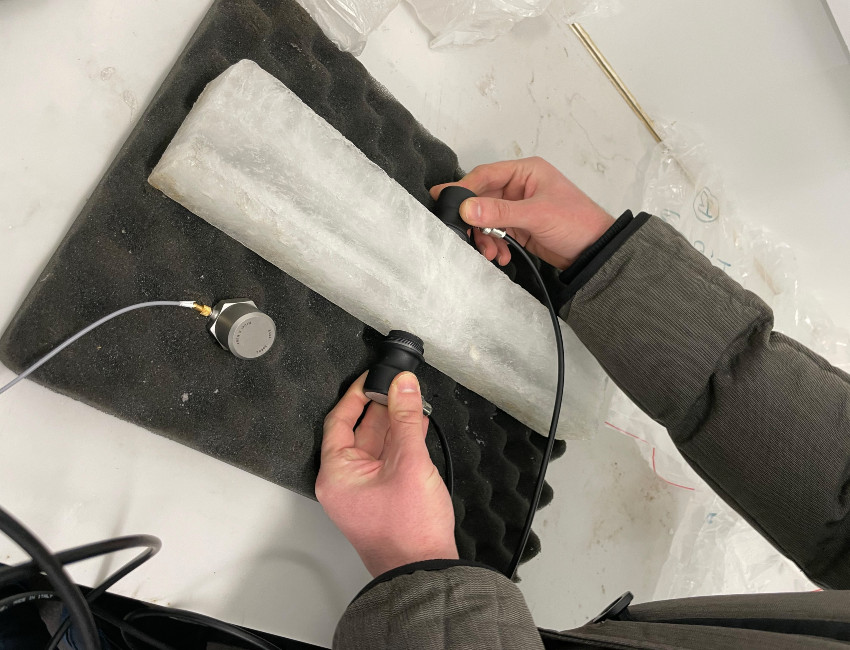Finding new inspiration 2000 kilometres from home
Celine Marie Solberg had never thought about going on exchange. But after half a year with limitations in a Covid-stricken Oslo she decided upon a semester in Svalbard. The studies has challenged her to broaden her field.

The days with field work on board Polarsyssel gave Celine a whole new understanding of her field. Photo: Celine Marie Solberg
Celine studies electronics and informatics at the University of Oslo. With a background in physics and maths she describes her choice of subjects at UNIS as relevant but adds that she loves the challenge of learning something brand new.
“I wanted to go beyond my original field of study, and explore in what new ways I can use my knowledge.”
“I’m very fascinated by the extreme environment on Svalbard. Every day I get new ideas to how I can use my background in the environment that’s here. I work with ice and think about all the instrumentation that is required to do research on the ice.”
Celine had never pictured herself going on exchange. She’d planned to follow the proposed study progression and didn’t think about deviate from it.
“However, last autumn, after six months of Covid-19, I decided to apply. It sounded fun, and I realised I needed to seize the opportunities I got.”

Different student life in Svalbard
Celine says she hardly remembers student life in Oslo pre-Covid-19. It’s been a year with a lot of restrictions, and the contrasts to Svalbard are huge. She lives in the student accommodation called “Sjøskrenten” with a big, diverse group of people. Except for a few instances where people haven’t cleaned the common kitchen, she’s loved it.
“It’s so much better than living alone. In a big group you’ll always find someone you connect well with. We watch movies together, cook, go on trips.”
“We have two massive glaciers in our backyard. I’ve bought ski touring equipment, and we go for trips straight after classes. It is so cool to have the wilderness right on our doorstep. The nature was a big driving force for coming to Svalbard.”
Furthermore, Celine is thrilled about the professional environment at UNIS.
“It’s fantastic to have professors who really love what they do. It’s great to see the professors getting all engaged and passionate when we study ice. It’s very inspiring. They are very good at what they do, and they have done so much interesting and relevant stuff. In class, they’ll refer to reports they’ve written or things they’ve discovered. That’s pretty awesome!”
Field work made it all come together
Her first field work experience was on a two-day cruise with Polarsyssel, the Governor on Svalbard’s boat.
“We sailed into Tempelfjorden, and came close to the Tuna glacier. One of my goals was to see a glacier front, and there it was! It was amazing! We had three kilometres with sea ice in front, and suddenly we saw a polar bear! It was almost impression overload.”
The students deployed sensors from the boat and worked shift in order to collect samples every 30 minutes.
“It was demanding work, getting dress, going out on deck, collecting samples, back in again to warm up, out again to collect new samples. But it was interesting to get a feel of how field work is done. We couldn’t rely on anyone else collecting these samples. It was our research, so we had to do it.”
Polarsyssel continued towards the Russian abandoned town of Pyramiden, where they collected samples from the sea ice in front of the Nordenskiöld glacier.
“Field work is priceless! My understanding of the field increased massively during the days with field work. I now get what we do.”

More time in the great outdoors
Before Celine arrived in Longyearbyen in January, she knew little about Svalbard.
“I didn’t know much about Svalbard but was eager to learn. I knew there were polar bears, and that adds a different dimension when it comes to your own safety in the wild. It’s serious business, the wrong decision can be fatal, but I think learning all these things have been exciting.”
Time flies when you’re having fun, and Celine has already started to plan for future stays in Svalbard.
“I’ve seen some master courses I believe I can attend. I’ve only been her for two months, but it already feels like my town. It’s a small place, and easy to get to know the locals. I’ll be back!”
The dark season was a special time for Celine, and she says she was very surprised when the light returned, and she discovered the whole city was surrounded by mountains.
“I thought the contour behind our student accommodation was clouds, only to realise it was a huge, majestic mountain.”
Laboratory work on the schedule
After collecting the ice core samples on board Polarsyssel they’ve spent the last few weeks in the laboratory where the students do measurements of the ice core samples.
“We have a device called a “pulsar.” It looks like a heart defibrillator on each side of the ice beam, and we send signals through the ice. The speed of the signals and the distance across the beam says something about the elasticity of the ice. That again says something about how much pressure we can put on the ice before it breaks. That’s important to know if you’re working with infrastructure in the Arctic.”

She is about to head to the laboratory for more ice core-CPR, but emphasises one point before leaving:
“The courses I study here at UNIS are somewhat different from my original study plan. When I started studying, I thought I would follow the regular plan. But, every day I discover new arenas where I can use my Arctic knowledge, and I believe I’ll be working in this area in the future.
UNIS offers courses in Arctic Technology every autumn and spring.